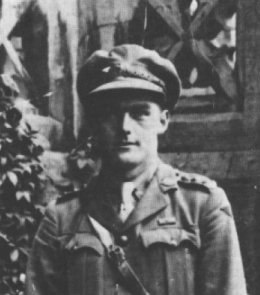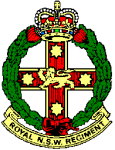 CAPTAIN PERCY VALENTINE STORKEY VC
CAPTAIN PERCY VALENTINE STORKEY VC
19th Battalion 5th Brigade, 2nd Division
PERCY VALENTINE STORKEY was born at Napier, Hawkes Bay, New Zealand, on 9 September 1891, son of Samuel James and Sarah Edith Storkey. He was educated at Napier High School, of which he was dux in 1910, and Victoria College, Wellington, where he studied first-year Arts.
Storkey served for five years with the Wellington Regiment in New Zealand – the last two years as a Colour Sergeant.
In 1911 he moved to Sydney and worked for a time with the Orient Steam and Navigation Company and later for the Blackfriars Teachers’ College at the University of Sydney where he also commenced to study Law.
Storkey enlisted in the AIF on 10 May 1915 at Liverpool, New South Wales as a Private and was posted to a Depot Training School.
On 16 August he was transferred to C Company, 30th Battalion where he attended an NCO Development School and qualified for promotion to Sergeant. On 3 September 1915 Sergeant Storkey applied for a commission. On 7 September 1915 he was transferred to the 7th Reinforcements of 19th Battalion. His application for a commission was approved and gazetted on 24 September 1915. Second Lieutenant Storkey embarked for service overseas on A29 HMAT Suevic on 20 December 1915.
On 14 November 1916 he was taken on the strength of 19th Battalion which was then located north of Flers in France. On the first day with his battalion he was wounded during an attack on Gird trenches, north of Flers and was evacuated to England and after recovering from his wounds rejoined the Battalion. On 1 January 1917 he was promoted to Lieutenant and on 10 October 1917 was again wounded when his battalion was engaged in the Third Battle of Ypres.
For his actions during the combined 19th and 20th Battalions’ attack on Hangard Wood, south of Villers-Bretonneux, on 7 April 1918 Lieutenant Storkey was recommended for a Military Cross on 11 April 1918. The original recommendation was altered, upgrading the recommendation to the Victoria Cross. The original recommendation for a Military Cross dated 11 April reads:
“Lieutenant Storkey was in charge of a Platoon[1] which took part in the attack at Bois de Hangard [Hangard Wood] on the morning of 7th April, 1918. On emerging from the wood the enemy trench line was encountered and Lieutenant Storkey found himself with six men. While continuing his move forward a large enemy party – about 80 or 100 strong – armed with several machine guns, was noticed to be holding up the advance of the troops on the right. Lieutenant Storkey immediately decided to attack this party on the flank and rear, and while moving forward to the attack, was found by Lieutenant Lipscomb and four men. Under the leadership of Lieutenant Storkey this small party of two Officers and 10 Other Ranks charged the enemy position with fixed bayonets, driving the enemy out, killing and wounding about 30 and capturing the remainder – three Officers and 50 men, also one machine gun. The splendid courage shown by this Officer in quickly deciding his course of action, and by his skilful method of attacking such great odds removed a dangerous obstacle to the advance of the troops on the right, and inspired the remainder of our small party with utmost confidence when being led forward to the objective line.”
The following month Storkey was appointed temporary Company Commander and temporary Captain; on 10 June he was confirmed in this rank. Storkey returned to Australia on 26 November 1918 and his AIF appointment ended on 31 January 1919; he was allocated to the Reserve of Officers on 1 July 1920. He resumed his Law studies at Sydney University and passed his final examinations while an associate to Mr Justice Wade of the Supreme Court. He was admitted to the bar on 8 June 1921. After a period in private practice Storkey was appointed to the New South Wales Department of Justice as Crown Prosecutor for the South-Western Circuit, which covered the area bounded by Goulburn, Albury, Deniliquin, Hay, Wyalong and Broken Hill. On 15 April 1922 he married an English-born divorcee, Minnie Mary Gordon, nee Burnett, at St Stephen’s Presbyterian Church, Sydney and they resided at Vaucluse. There were no children from their marriage.
In May 1939 Percy Valentine Storkey was elevated to the New South Wales District Court Bench and was a Judge of the Northern District until his retirement in December 1955. On his retirement he and Minnie went to England to live in Teddington, Middlesex, where he died on 3 October 1969. He is commemorated at the South-West Middlesex Crematorium, Hanworth, United Kingdom.
Captain Storkey bequeathed his Victoria Cross and medals to his old school, Napier Boy’s High School in New Zealand. In 1983 there was considerable controversy when the school’s Parent League wanted to sell the Victoria Cross to finance student scholarships. However, wiser heads prevailed and his Victoria Cross was transferred to the Queen Elizabeth II Army Memorial Museum (now known as The National Army Museum) on a long term loan where it is still located. A replica copy of Storkey’s VC is displayed at the Napier Boy’s High School.
[1] This is not quite correct. Storkey at that time was the Second-in-Command of B Company and was not commanding a Platoon. Both of the Companies were very tired and, while waiting for the order to commence the attack, some of the men, including Storkey, dozed off. He roused himself and to his surprise found that the attack had already started and B Company was seventy-five metres in front of him; he moved forward to rejoin it picking up six other stragglers in the process.
On emerging from a tree line at the edge of the wood with his small party Storkey noticed that a larger German group, about eighty to a hundred strong and armed with several machine-guns, was holding up the advance of the Australian troops on their right. At that time he was joined by another Officer, Lieutenant Lipscomb, and four men and under Storkey’s leadership this party of twelve charged the enemy position with bayonets fixed. They drove the much larger German force out, killing or wounding thirty, and capturing three officers, fifty men and a machine-gun.
Refer to Bean’s Official History. Volume 5, Chapter 15, Hangard Wood & Somme, Pages 505 to 513 for a more detailed version of the 5th Brigade attack on Hangard Wood which was carried out by a composite force from B Company of 19th Battalion and C Company of 20th Battalion.
